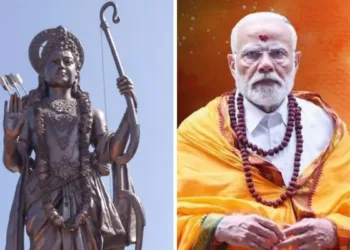The Supreme Court has raised critical questions about implementing a blanket pornography ban for minors in India, pointing to Nepal’s unsuccessful attempt. During a recent hearing on November 3, 2025, Chief Justice BR Gavai referenced international examples while considering a petition seeking to block porn access for individuals under 18.
Table of Contents
Supreme Court Case Overview: Digital Age Concerns
| Aspect | Details |
|---|---|
| Case Name | B.L. Jain vs. Union of India |
| Case Number | W.P.(C) No. 000722/2025 |
| Bench | CJI BR Gavai & Justice K Vinod Chandran |
| Key Issue | Blocking pornography access for minors below 18 |
| Status | Re-listed after 4 weeks |
The Nepal Reference: A Cautionary Tale
When petitioner’s counsel Advocate Varun Thakur argued that countries worldwide have banned pornography, CJI Gavai posed a thought-provoking question: “You know they tried to ban it in Nepal, then what happened in Nepal?”

This reference highlights the practical challenges of enforcement. Nepal’s attempted ban sparked significant youth protests, demonstrating how prohibition policies can backfire in the digital era where VPNs and proxy servers make blanket bans nearly ineffective.
Why the Petition Demands Action
The petition presents alarming statistics about pornography consumption in India:
- 5,000 porn sites are accessed every second globally
- Over 20 million porn videos are launched annually since 2005
- More than 200 million pornographic clips, including child pornography, are available in the Indian market
Advocate Thakur emphasized post-pandemic digital accessibility: “After COVID, children are using mobile, in one click, this situation is there.” He claimed that Europe, Australia, China, and Arab countries have implemented complete bans, positioning India as an outlier.
Learn more about digital safety regulations and cyber law frameworks on our platform.

Legal Framework Under Scrutiny
The petition invokes Section 69A of the Information Technology Act, which empowers the Central Government to block public access to content through computer resources. However, petitioners argue the Union has failed to exercise these powers despite documented harms to minors.
The Ministry of Electronics and Information Technology has previously blocked specific pornographic websites, but comprehensive enforcement remains challenging.
Policy vs. Judiciary: Who Decides?
The Supreme Court bench verbally observed that this matter falls under the government’s policy domain, suggesting judicial reluctance to mandate sweeping internet restrictions. This stance aligns with democratic principles where elected representatives, not courts, should determine digital policy frameworks.
What Petitioners Seek
The petition requests two primary reliefs:
- National Policy Directive: Formulate an action plan to curb pornography watching, especially for minors
- Public Place Prohibition: Ban pornographic material consumption in public spaces
The Enforcement Challenge
Implementing such bans presents technical and practical hurdles. Modern internet users can easily circumvent restrictions using VPNs, Tor browsers, and encrypted connections. Additionally, defining “pornography” legally remains contentious, with concerns about overreach affecting legitimate content.
For insights on internet governance and digital content regulation, explore our detailed analyses.
What’s Next?
The court has agreed to re-examine the matter after four weeks, allowing time for government response and further deliberation. This case underscores the tension between protecting minors online and maintaining internet freedom in democratic societies.
As India grapples with digital-age parenting challenges, the outcome could set precedents for content regulation nationwide. Whether technological solutions like age verification systems or parental controls offer better alternatives to outright bans remains part of the ongoing debate.
Frequently Asked Questions
Q1: Can the Indian government legally ban pornography access?
Yes, under Section 69A of the IT Act, the government can block access to online content. However, the Supreme Court has indicated this is primarily a policy matter requiring government initiative rather than judicial mandate.
Q2: Why did the Supreme Court mention Nepal’s ban attempt?
The Chief Justice referenced Nepal’s failed pornography ban to highlight practical enforcement challenges. Nepal faced significant public backlash and protests when attempting prohibition, suggesting blanket bans may be ineffective in controlling digital content access.








